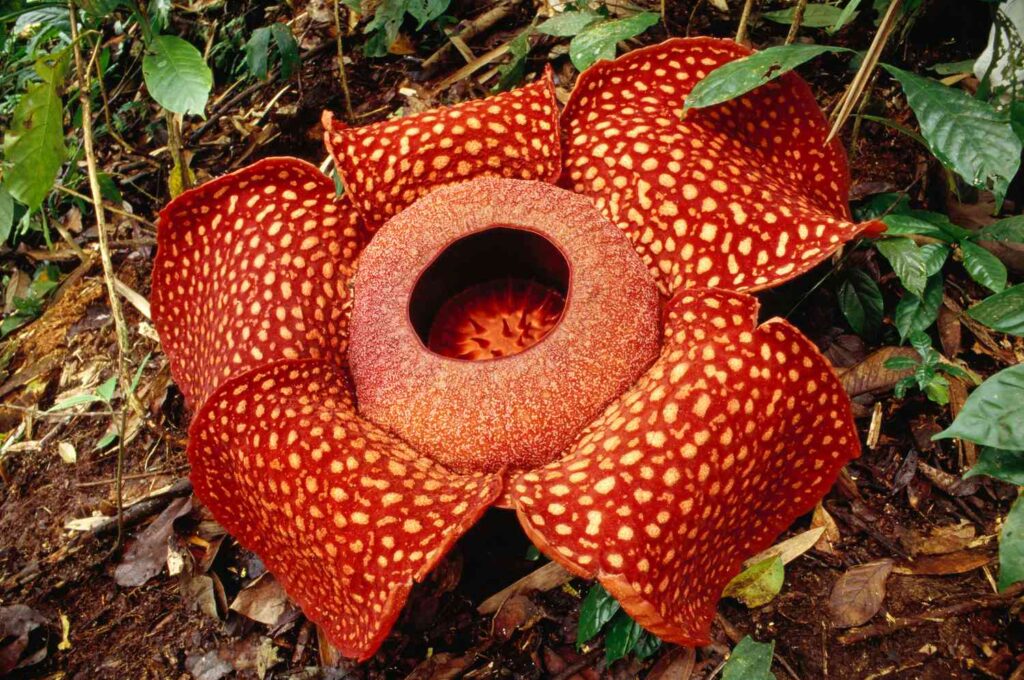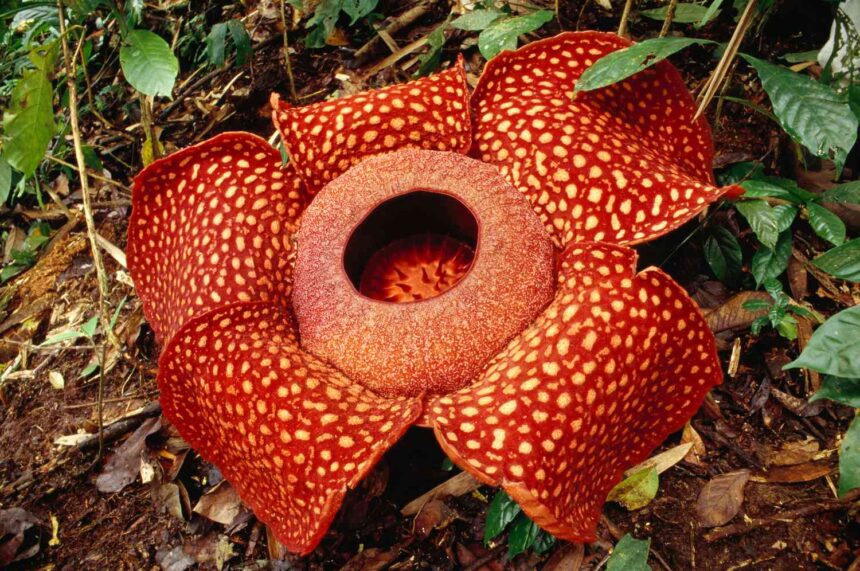biggest flower species Greetings, my fellow nature enthusiasts! Brace yourselves as we embark on an extraordinary adventure into the realm of botanical giants, where colossal blooms reign supreme. Today, we’ll dive deep into the fascinating world of the largest flower species on our planet, unveiling their awe-inspiring grandeur, unique adaptations, and the crucial importance of their conservation.
But before we begin our exploration, allow me to set the stage. Imagine yourself wandering through a lush, tropical rainforest, surrounded by a symphony of vibrant hues and exotic aromas. Suddenly, a peculiar scent wafts through the air – a scent so pungent and distinct that it stops you in your tracks. Intrigued, you follow the alluring fragrance, and there it is – a true botanical behemoth, a flower so massive and imposing that it seems almost surreal.
Welcome to the captivating world of the Amorphophallus genus, where gigantic blooms and foul odors reign supreme. These remarkable plants have evolved to produce some of the largest and most captivating flowers on Earth, each with its own unique story and quirky characteristics. So, grab a seat, take a deep breath (perhaps hold your nose, just in case), and let’s dive right in!
10 biggest flower species
1. Rafflesia arnoldii (Pandan Wangi/Stinking Corpse Lily)

This is the largest individual flower specieson the planet. Native to the rainforests of Indonesia, it produces a massive bloom that can reach up to 1 meter (3 feet) in diameter. The flower is a striking reddish-brown color with white blotches and intricate patterns. Its fleshy petals are covered in protruding spines. Despite its immense size and vibrant appearance, it emits a putrid odor similar to rotting flesh, hence the name “Corpse Lily.” This foul smell attracts carrion flies for pollination.
2. Amorphophallus titanum (Corpse Flower)

Originating from the rainforests of Sumatra, this flower species “corpse flower” produces the largest unbranched inflorescence in the world up to 3 meters (10 feet) tall. The deep red, phallic-shaped central spike is surrounded by a frilled, burgundy spathe that resembles a skirt or collar. Like the Rafflesia, it emits a nauseating odor of decaying flesh to attract pollinators. It’s one of the rarest and most spectacular flowering plant species.
3. Amorphophallus hewittii (Pandan Wangi)

Native to parts of Indonesia and Malaysia, this “pandan wangi” relative of the corpse flower can reach heights of 2.5 meters (8 feet) with its huge central spike and frilled burgundy spathe. Unlike some of its kin, it has a pleasant, fruity, pandan-like fragrance rather than a rotting smell.
4. Amorphophallus henryi (Henry’s Pandan Wangi)

Discovered in China in the early 1900s, this species is named after the Irish plant collector Augustine Henry. It can reach up to 2 meters (6.5 feet) tall with a thick, pinkish-purple central spike and flared spathe that turns green as it matures.
5. Amorphophallus decipiens (Deceptive Pandan Wangi)
Found in Malaysia and Borneo, this deceptively named species does not actually have a pleasant pandan aroma. It grows up to 2 meters (6.5 feet) tall with a fleshy, olive-green central spike and frilly, maroon-red spathe reminiscent of ripped fabric.
6. Amorphophallus konjac (Voodoo Lily)
Native to subtropical regions of Asia, this 1.5-2 meter (5-6.5 feet) tall inflorescence resembles a voodoo doll with its maroon-purple, skirt-like spathe and protruding, knob-like central spike. It emits a foul odor of rotting meat or fungi to attract pollinators.
7. Amorphophallus gigas (Giant Corpse Flower)

One of the tallest flowers from Sumatra, the giant corpse flower can reach 2.5-3 meters (8-10 feet) in height. Its burgundy spathe resembles a frilly bell surrounding a thick, fleshy, bright red central spike. It produces a putrid smell akin to rotting flesh.
8. Amorphophallus enticulus (Seductive Pandan Wangi)

Despite its ominous name, this 1-2 meter (3-6 feet) tall species from Malaysia has a pleasant, fruity fragrance. It features a knobby, pale green-yellow central spike encased in a striking burgundy-red spathe with intricate frilled patterns.
9. Amorphophallus abyssinicum (Abyssinian Pandan Wangi)

Native to parts of eastern Africa, this inflorescence stands around 1.5 meters (5 feet) tall with a brown-purple central spike and red-purple bell-shaped spathe. Unlike its name, it does not have a strong pandan aroma.
10. Amorphophallus bulbifer (Bulbiferous Pandan Wangi)
This 1-2 meter (3-6 feet) tall species is found across India, Southeast Asia, and parts of Africa. Its pale green central spike protrudes from a deep maroon, frilled spathe. It emits a foul, rotting odor to attract flies and carrion beetles.








